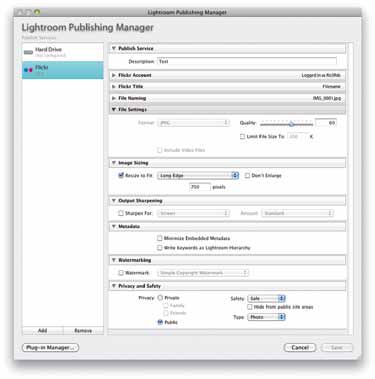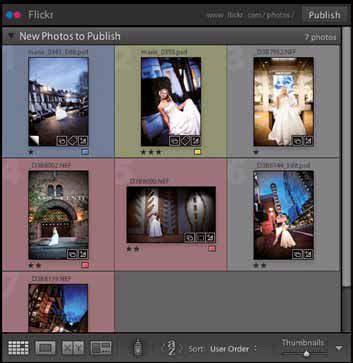articles/Lightroom/lightroom3new-page4
Lightroom 3 What's New? - part 4 of 1 2 3 4
by Art Suwansang Published 01/08/2010

Tethered Capture.
Previously, if you wanted to capture live with Lightroom you had to setup a hot folder where Lightroom would look for new files to import; then separately set up the additional manufacturer's tethered soft ware so that your camera could communicate with the computer. In Lightroom 3, you can now capture live to Lightroom using the new tethered capture interface, which currently supports certain modern Nikon and Canon DSLR cameras (fig.13). The tethered capture inter face in Lightroom won't quite control your camera like the manufacturer's software just yet, but it is a good star t, with a promising future; it also saves you from having to purchase the extra software. What I found particularly useful was the ease of set-up and the speed with which it imports the image into Lightroom, plus the fact that I can automatically apply the develop presets on the imported images and change these import presets on the fly.
Video Handling.
With the recent DSLR advancement, more cameras now have video capabilities and we photographers are starting to explore this new alternative avenue to enhance our creativity, challenging the medium of our work. Earlier versions of Lightroom didn't support any video format, which made cataloguing and archiving video with still photographs something of a difficult and less organised process. This has now changed so that any video clips shot with a DSLR can be imported into Lightroom 3 for cataloguing and archiving (fig14-15). You can add keywords and metadata to these video clips; furthermore, these clips may now be added to collections as well, streamlining your digital assets management and organisation. Lightroom, however, will not play your video files natively in the program, it will hand them off to an external player such as QuickTime for play back. When a video file is exported, Lightroom will export the original video file. Some might say that this feature is not quite as robust but I see it as good start and a positive addition for Adobe to build on.

Published Services.
Another new element in Lightroom 3 that has great potential is Published Services. It enables Lightroom to integrate directly with many of the Internet photo-sharing service sites, such as Flickr service by Yahoo, Picasa by Google, or even Facebook. It works via a Published Services plug-in that you can download (fig.16-17). For example, since I have a Flickr account, I would authenticate my account using the Lightroom Published Services Plug-In, and from this point on I can simply drag any images into my Flickr collection in Lightroom, click on 'publish' and - voila! Lightroom automatically exports the images to my preset specification and automatically uploads them to Flickr (fig.18). If my friends should comment on any of the images, the comments are downloaded right back into Lightroom, creating a fully integrated environment with the photo-sharing services (fig.19). It can be a great time-saving tool and help eliminate many of the manual web publishing processes.
Please Note:
There is more than one page for this Article.
You are currently on page 4
- Lightroom 3 What's New? page 1
- Lightroom 3 What's New? page 2
- Lightroom 3 What's New? page 3
- Lightroom 3 What's New? page 4
1st Published 01/08/2010
last update 09/12/2022 14:55:58
More Lightroom Articles
There are 68 days to get ready for The Society of Photographers Convention and Trade Show at The Novotel London West, Hammersmith ...
which starts on Wednesday 14th January 2026





